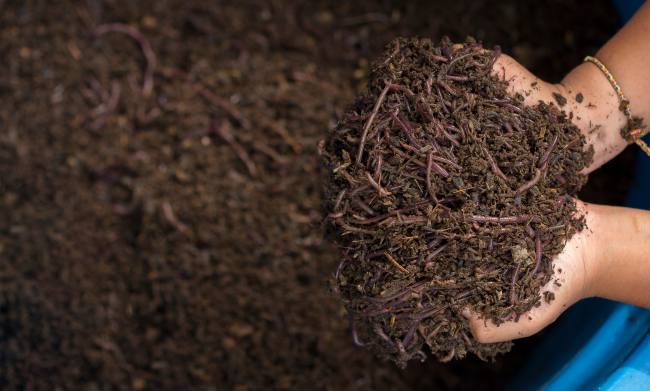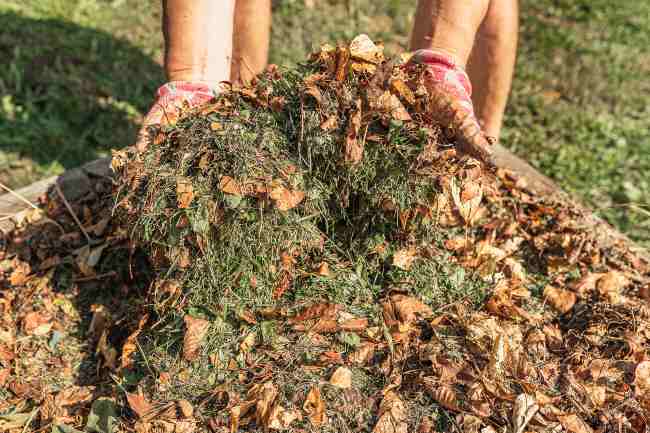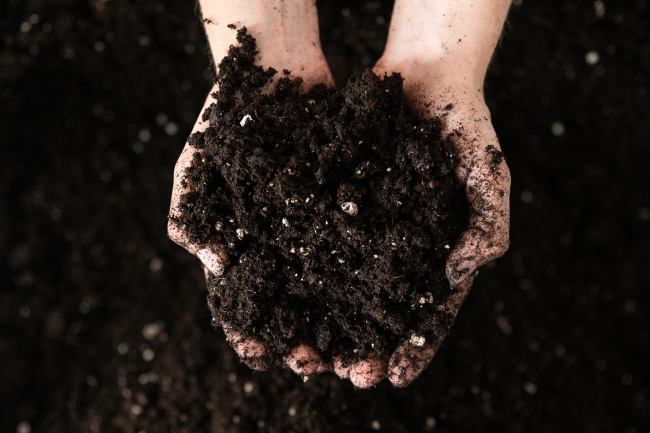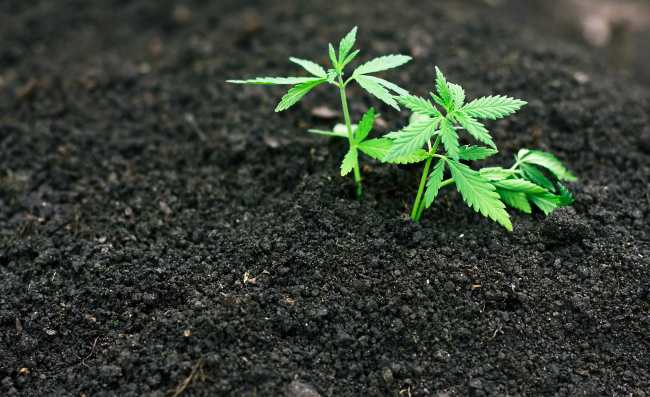
Tuesday May 24, 2022
By Trevor Ross
 Growing
Growing
The process of growing cannabis can be intimidating for new or prospective growers because it typically involves precise administrations of the right fertilizers at the right intervals, not to mention the nuances of pest control and healthy grow medium management. With so many elements to juggle, the process can quickly become more clinical than cathartic.
There’s a growing trend of organic gardening that instead focuses on curating the conditions for success, and lets Mother Nature manage the rest. It's called living soil or “no-till” gardening, and the goal is to utilize microbes and other organisms to create a sustainable soil that produces healthy cannabis year after year, without the regular addition of fertilizers or changing out the soil.
This article reviews the practice of using living soil for cannabis, examines some pros and cons of no-till gardening, and describes how to make living soil at home.
What is Living Soil?
Living soil is soil that is rich with microbial life like fungi and bacteria, and typically includes larger lifeforms like nematodes, worms, and even insects. Living soil is meant to more closely simulate the wild soil of forests, prairies, and wetlands where natural processes perpetuate the health of the soil, including nutrient synthesis, aeration, water retention, and pest control.

Natural soils don’t get their nutrients from fertilizers, but rather via the decomposition of organic material such as fallen plant matter, decaying bugs and animals, and castings — poop. Once in the ground, this matter is eaten by bacteria which break down complex molecular compounds into nutrients available for plants. When the soil is left undisturbed (not tilled), beneficial mycorrhizal fungi grow on plant roots and act as extensions of the root system, reaching farther for nutrients and protecting the roots against pathogens.
Meanwhile, larger lifeforms like worms consume organic material in the soil and pass out castings which are rich in nutrients and offer excellent water retention. Worms also aerate the soil as they move through, loosening it for roots, and providing continuous oxygenation. Many living soils for cannabis also contain predatory nematodes which eat the larvae of other pests like fungus gnats.
In the wild, this system perpetuates itself as organic material regularly falls to the ground and feeds the process beneath. In a home grow, organic material may need to be added in the form of compost, trimmings, or yard waste.

The alternative to living soil is something like potting soil, which is usually designed for a single use, or requires fertilizer to replenish nutrients. Some may include a time-release fertilizer, but these are usually all-purpose fertilizers which are a little helpful for everything, but not perfect for anything in particular.
How to Make Living Soil
Ideally, living soil will be used for several years, as opposed to being thrown out and replaced after each use. To achieve this, growers will create a small ecosystem which will continually renew itself. Cultivating living soil is not an exact science like following a recipe, but there are fundamental elements that need to be included or addressed.
Here is a closer look at the elements required to constitute a “living soil” and how to achieve them.
Mineral
What we call dirt is a combination of minerals and humus, or organic material. The mineral structure of soil is generally categorized into three categories: clay, sand, and silt. A combination of all three is preferable, and results in a loose, fluffy loam that is good for roots and fungi.
Organic Material
In living soil, organic material is the stuff living organisms eat and break down into nutrients. Examples include leaf and yard waste, manure, kitchen scraps, or compost.

Microorganisms will eat away at this complex organic material, reducing the molecular composition into nutritious compounds available for plant absorption.
Microorganisms
Microorganisms are the life in living soil. They break down organic matter into viable nutrients. The easiest way to add a host of beneficial microorganisms is with compost. Even flushing compost tea through otherwise dead soil will introduce millions of bacteria and protozoa to the growing medium. Packs of microbial material are also available for purchase, as well as prepared soils that include microbial presence, but even a fistful of your neighbor’s compost will introduce enough life to get you started.
Water
Water is essential for any growing process, but in living soil the water sustains not only the plant, but the ecosystem in the soil as well. Many of these microorganisms and other small critters will dry out faster than the roots, so living soil should be kept comfortably moist at all times. The good news is that the humus in living soil, including worm castings and half-decayed material, retains moisture very well.

Because of this, the soil shouldn’t require more watering than usual and over the whole process may even require less. For added assurance, porous vermiculite can be mixed into the soil to improve water retention.
Air
Plants and the microorganisms that support them all need air to survive, same as humans. Plants take in oxygen through their roots, which is why hydroponics systems usually use bubblers to oxygenate the water. In soil, plants can breathe fine as long as their soil is loose enough. Thankfully, earthworms turn over soil and carve breathing corridors simply by virtue of crawling around. If you decide against using worms, at least make sure the soil is not bogged down with heavy clay.
Conclusion
Despite the attention paid to microorganisms, no-till growing and living soil are methods of not micromanaging the growing process. The hands-off approach only hands off control to mother nature, and creates the conditions that more closely simulate how cannabis would grow in the wild.

However, while living soil increases the organic integrity of the plants, it will not always increase yields. Growers trying to maximize every gram may still find more success with precise nutrient control in a more sterile environment like hydroponics.
Frequently Asked Questions
Is Living Soil Good for Cannabis?
Yes. Living soil contains beneficial microbial life which supports sustainable nutrient synthesis, and often includes natural forms of pest control that are good for most plants, including cannabis.
How Do You Grow Organic Living Soil?
The magic ingredient in living soil is the microbial life that is not present in options like potting soil. This microbial life can be introduced with compost or compost tea. Alternatively, organic material like yard waste or kitchen scraps can be added to soil to begin introducing microbial life, but this is essentially the first stage in composting, so compost remains the best answer.
Do You Fertilize Living Soil?
No. Ideally, living soil does not need fertilizing because it produces its own nutrients, though it may need to be “fed” additional organic material. Furthermore, concentrated fertilizers are often harmful for microbial life in soil, particularly mycorrhizal fungi, so they should never be used in living soil.
Can You Use Living Soil Outside?
Yes. In fact, most soil outside is living soil. Even strictly manicured garden beds will inevitably host an ecosystem soil and insect life.
Do you use living soil in your cannabis grow? Tell us what you think in the comments below!






